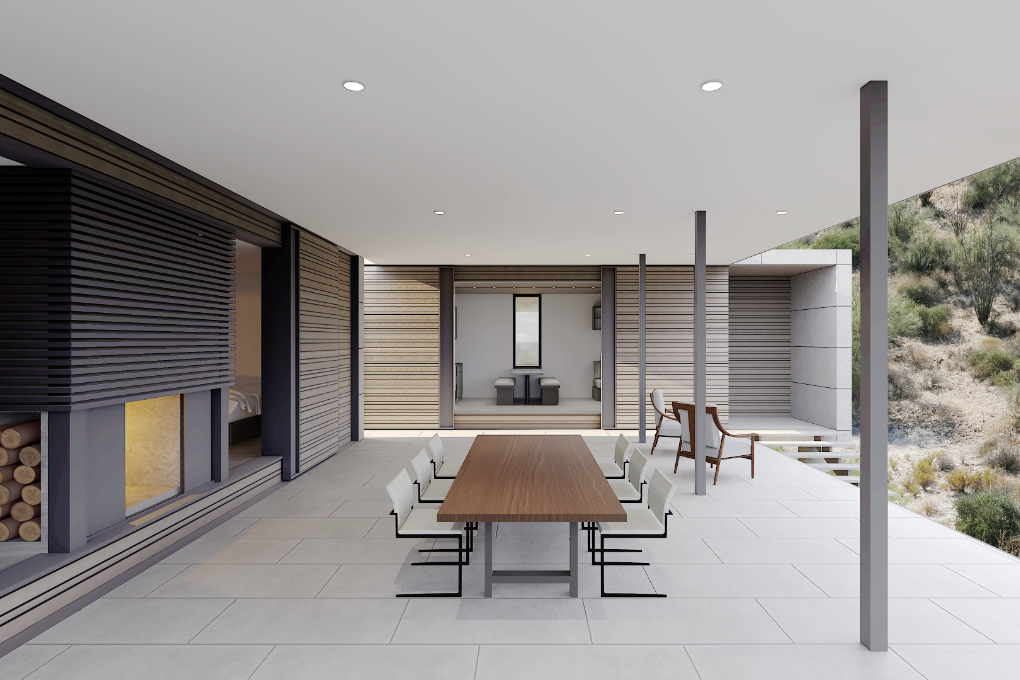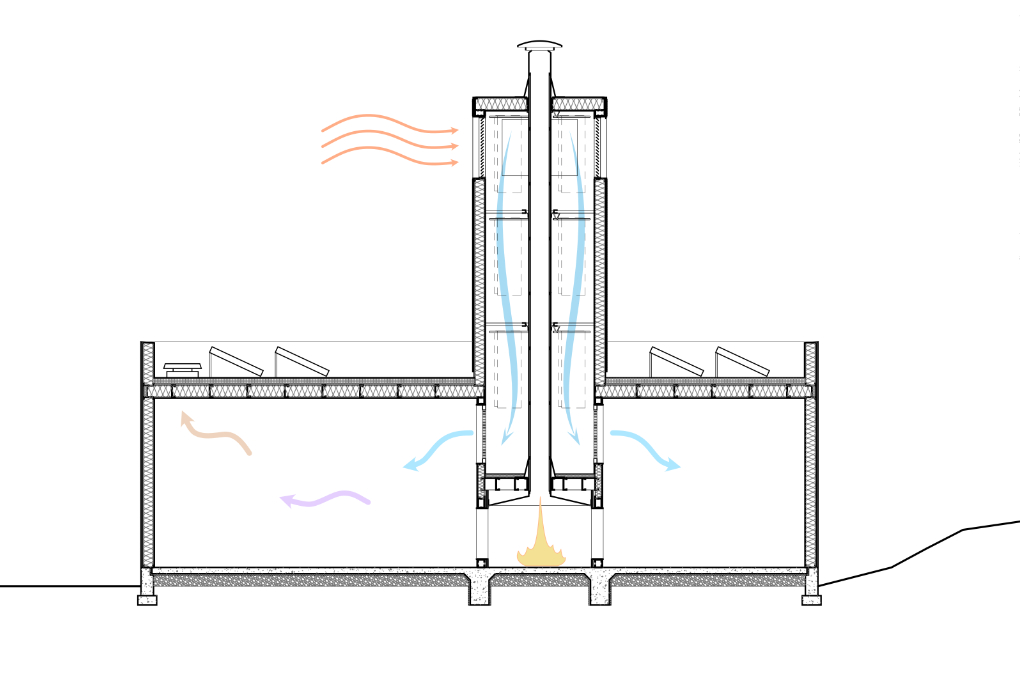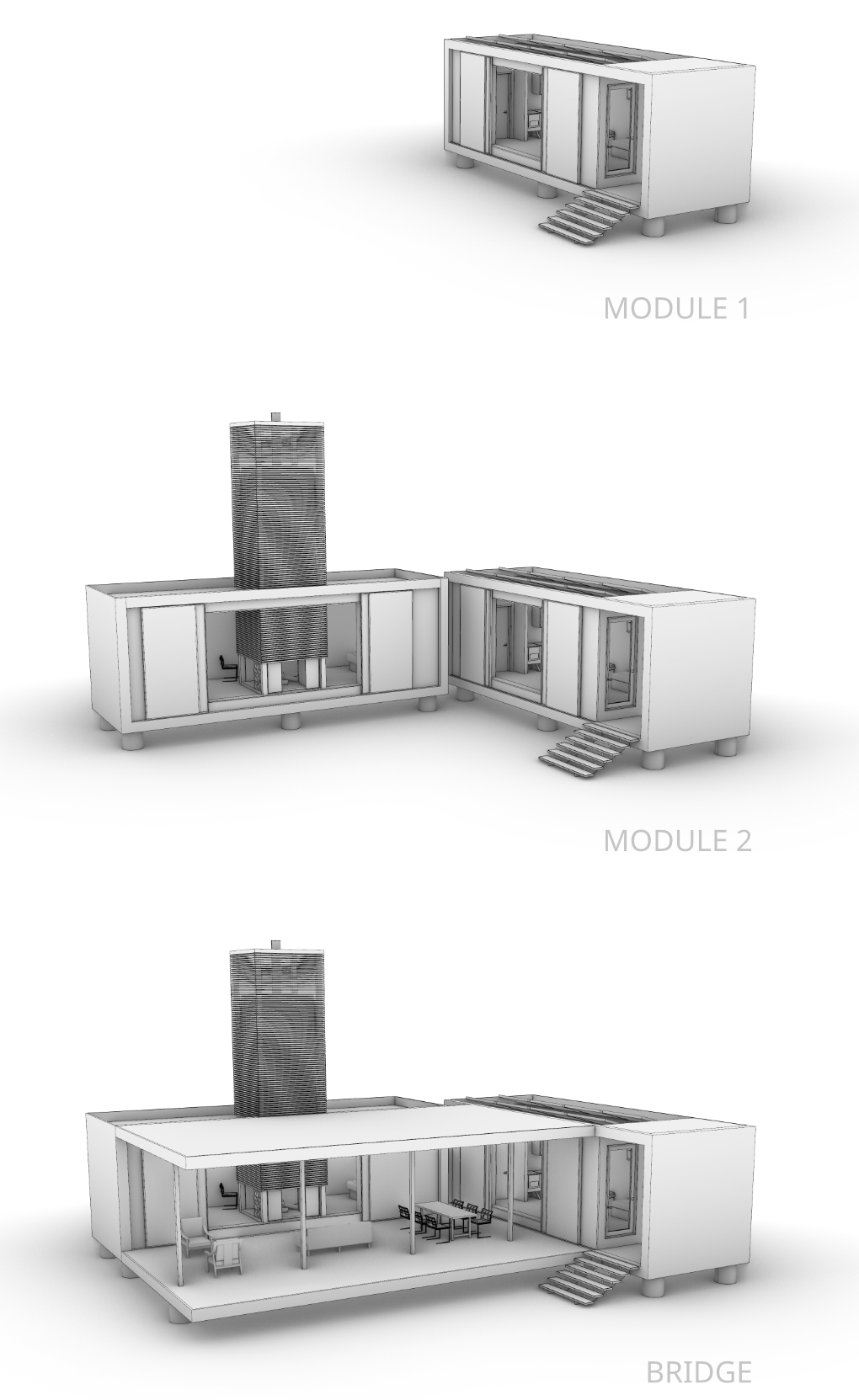 Contact
About
Contact
About
Building with connection to our natural environment is a continuous exploration and as new technologies emerge, we find new efficiencies and techniques for improving our relationship with our surroundings. But sometimes, old technologies are still relevant as well. This case-study house marries old concepts with new systems to create a living space that adapts to a unique site.
With limited site access to a remote location, on-site construction proved challenging and costly. A modular, pre-fabrication process allows for the dwelling units to be built in controlled factory conditions and then delivered and installed on site. A metal-clad passive cooling tower and shaded patio would then be constructed in-place to bridge between the units.
The cooling tower itself is derived from ancient technology used in Persian cultures to create passive cooling in hot, arid climates. These cultures have been using windcatching towers, or badgir, to create evaporative cooling from the hot dry winds passing over a wet substrate to create cool, heavy air. That cold air drops down into the dwelling though stack effect pressure and cools the occupied spaces below. To implement that same concept in this project, a solar-powered on-site well pumps the ground water up the tower to hanging substrates. Modern fluid dynamic studies have shown that the effect can be increased by additional evaporative media along the height of the tower. At the base, water is collected and reused to minimize inefficiencies. During the time of year when the diurnal swing brings cold nights, the center of the tower functions as a flue for the fireplace at the base.
The heating and cooling load for the interior spaces is drastically reduced by a high-performance envelope that incorporates staggered metal studs to minimize thermal bridging and fiber-cement rainscreen panels to vent the solar heat gain on the surface. The combined effect provides comfortable living space through the extreme heat of summer and cold winter nights.




